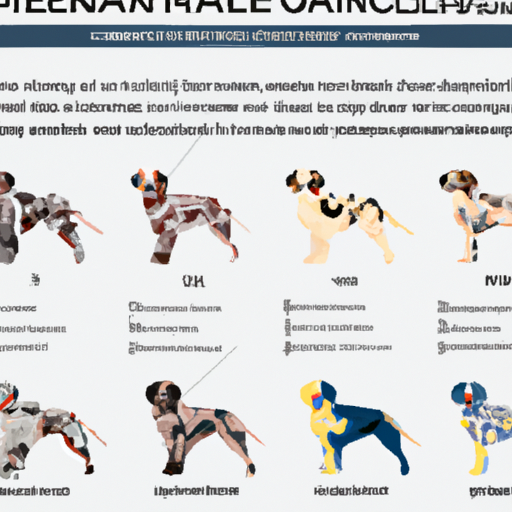Understanding the Merle Gene
When you look at your furry friend, you might notice their unique coat pattern. This pattern, known as merle, is a result of a specific gene in dogs. But what exactly is this gene, and how does it work?
The Merle gene is a dominant gene that affects the pigmentation in a dog’s coat, causing patches of colors in varying shades. The unique aspect about the merle gene is that no two dogs will have the same pattern or color distribution. This is because the gene randomly dilutes pigment in some areas of the coat, while leaving other areas unaffected. The result is a beautiful, mottled effect.
The Science Behind the Merle Gene
Now, let’s delve deeper into the science behind this captivating coat pattern.
- The Merle gene affects the melanocytes, the cells responsible for producing melanin – the pigment that gives color to a dog’s coat, skin, and eyes.
- When a dog has the Merle gene, the melanocytes are unevenly distributed, leading to the unique patterns and color variations.
- The gene can affect both eumelanin (black/brown pigment) and pheomelanin (red/yellow pigment), leading to a range of possible colors and patterns.
The presence of the Merle gene can also affect the dog’s eye color, often leading to blue or heterochromia (two different colored eyes).
| Pigment | Normal Color | Affected by Merle |
|---|---|---|
| Eumelanin | Black/Brown | Diluted or mottled |
| Pheomelanin | Red/Yellow | Lightened |
Breeds Affected by the Merle Gene
Many breeds can carry the Merle gene, but it’s more common in some than others. These include:
- Australian Shepherd
- Border Collie
- Dachshund
- Great Dane
- Cardigan Welsh Corgi
- Shetland Sheepdog
In these breeds, the merle pattern is widely accepted. However, in other breeds like the Pomeranian or Chihuahua, the merle pattern is controversial due to potential health risks.
Health Implications of the Merle Gene
While the merle pattern is undeniably beautiful, it’s important to note that it can also come with potential health implications. Dogs with the Merle gene can be prone to vision and hearing issues. This is particularly common in dogs with two copies of the gene, often referred to as “double merles.”
Here’s what you should know:
- Deafness: Dogs with the merle gene are more likely to have auditory problems, including deafness, particularly if they have a high percentage of white in their coat.
- Vision problems: The Merle gene can also lead to irregularities in the eye’s development, leading to vision problems.
It’s important to consult with a vet regularly to ensure any potential issues are identified and treated early.
FAQs about the Merle Gene
Q: Does the Merle gene affect a dog’s lifespan?
A: There’s no direct link between the Merle gene and a dog’s lifespan. However, health issues related to the gene, such as vision or hearing problems, may require special care or treatment.
Q: Can a dog be a carrier of the Merle gene without showing the pattern?
A: Yes, it’s possible for a dog to carry the Merle gene without it affecting their coat pattern. These are known as “cryptic merles.”
Q: Are merle dogs more expensive?
A: Merle dogs can sometimes be priced higher due to their unique and beautiful coat patterns. However, potential buyers should consider the possible health implications associated with the gene.
Q: Can two merle dogs breed?
A: Breeding two merle dogs is generally discouraged due to the risk of producing “double merles,” which are more likely to suffer from health issues.
Q: Is the Merle gene only found in dogs?
A: While the Merle gene is most commonly associated with dogs, it can also occur in other animals, including mice and cattle.
In conclusion, the merle pattern in dogs is a fascinating genetic phenomenon that results in beautiful, unique coat patterns. However, as a caregiver, it’s essential to be aware of potential health issues related to the gene and ensure your furry friend gets the care they need.



